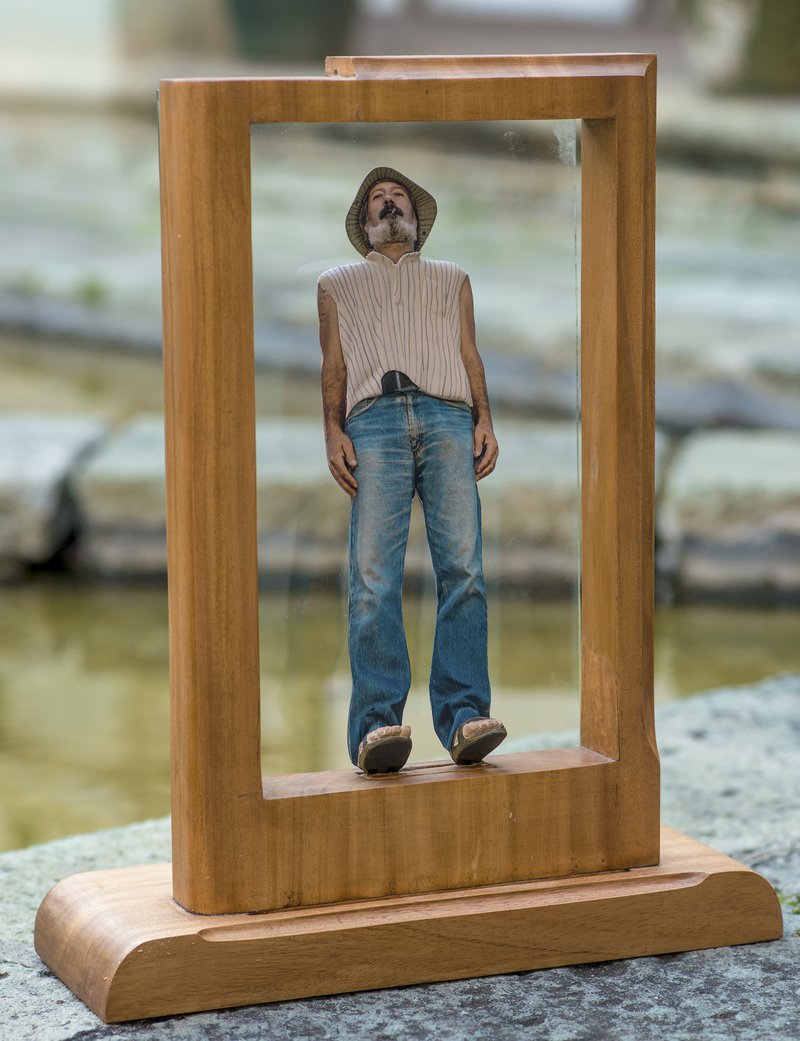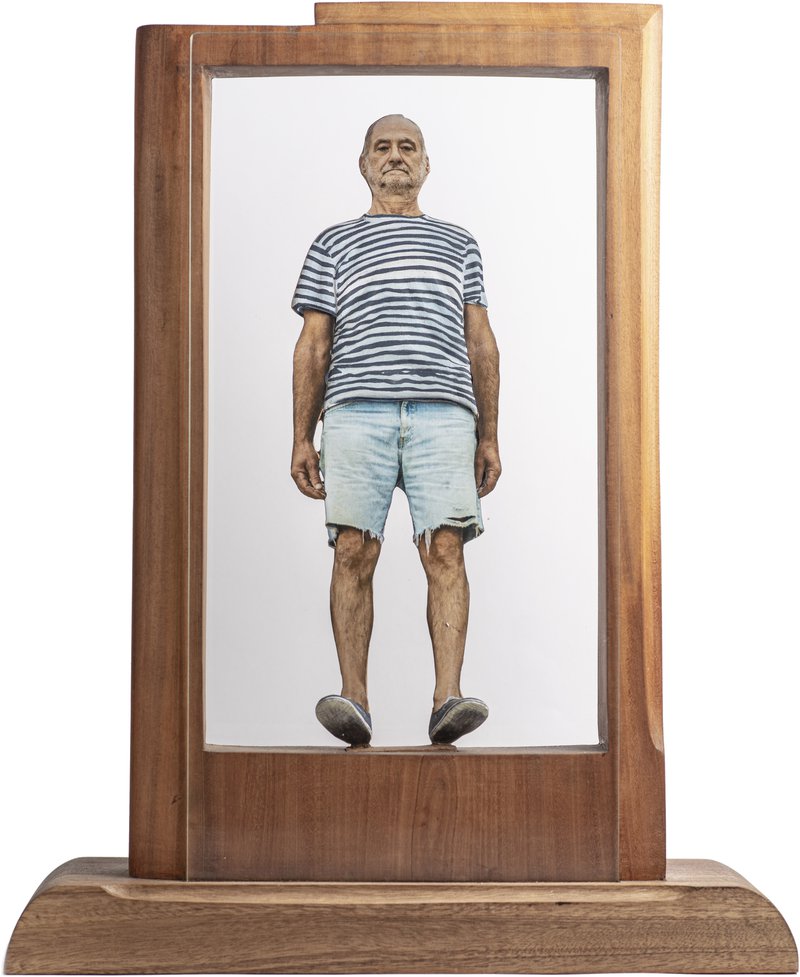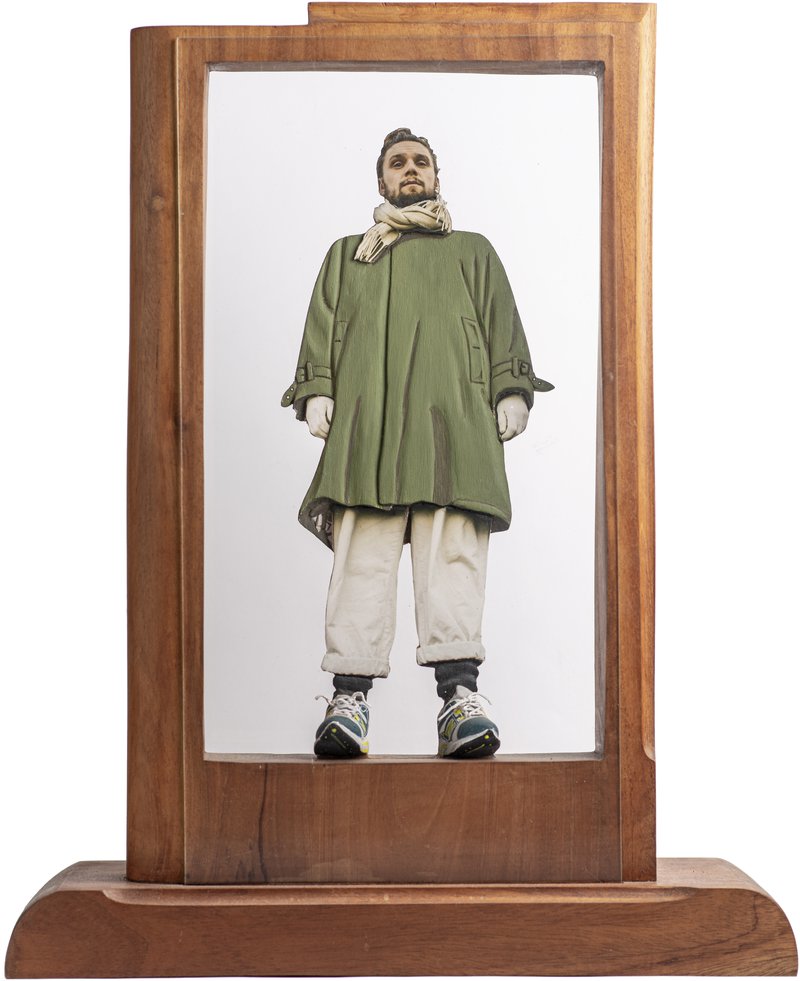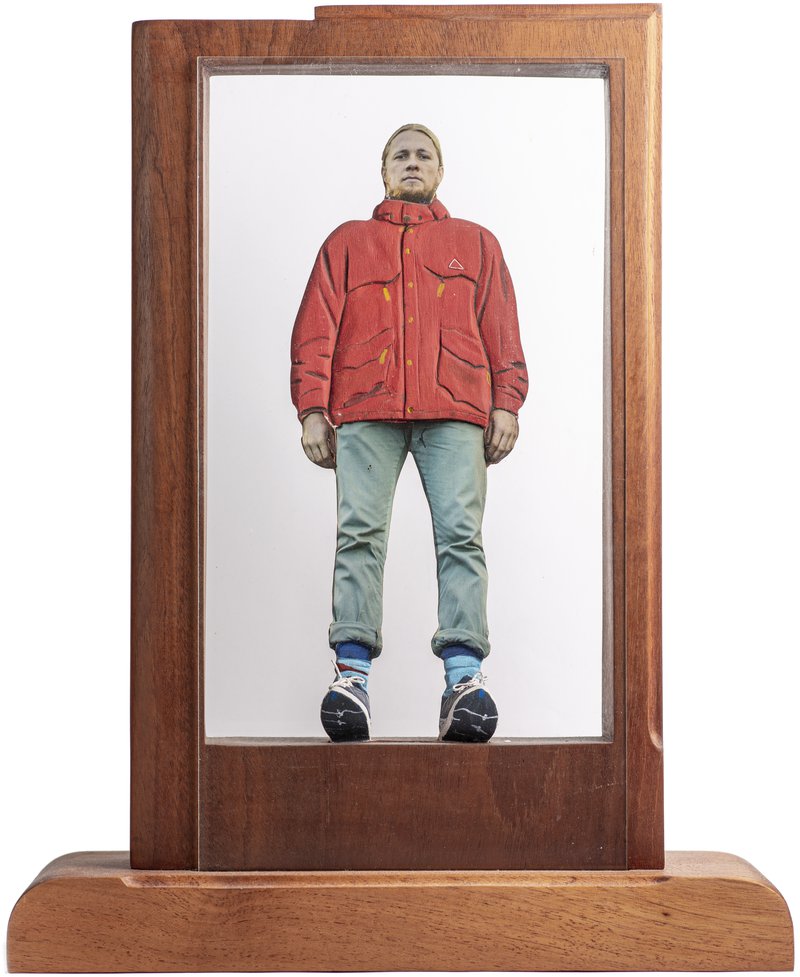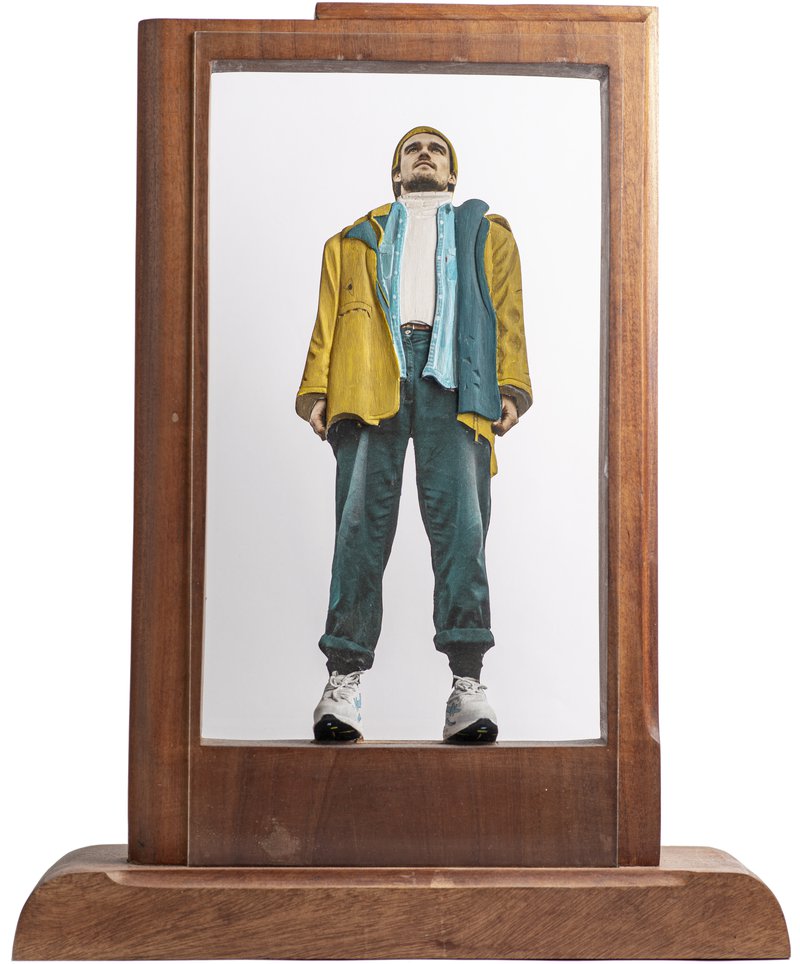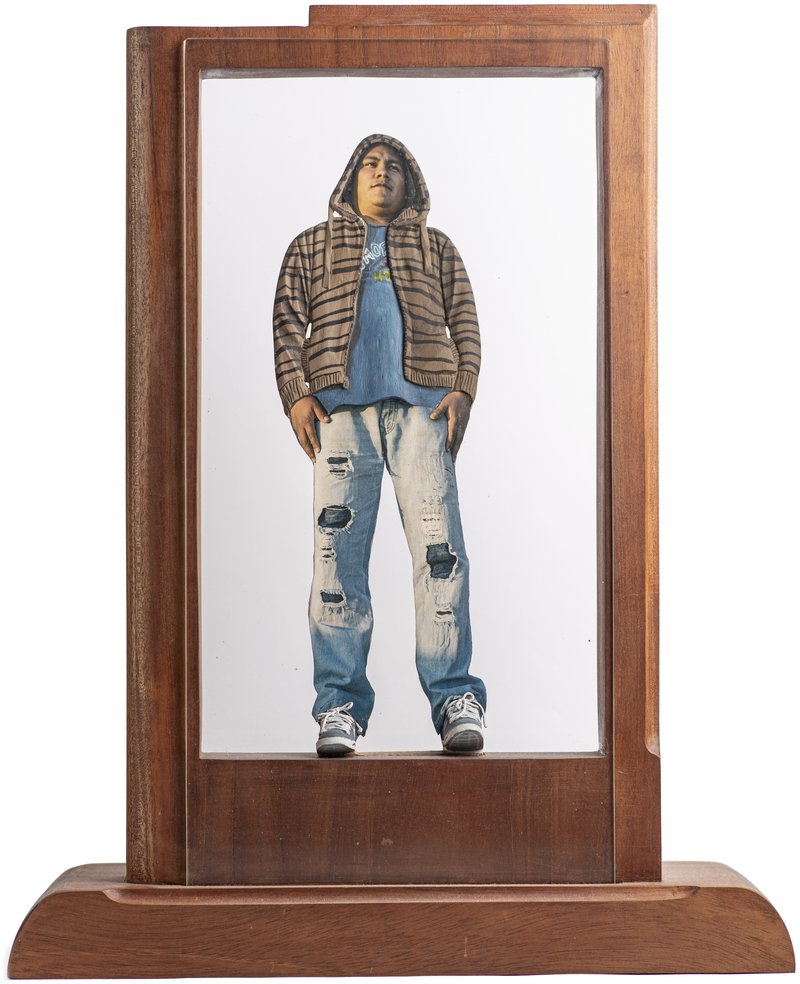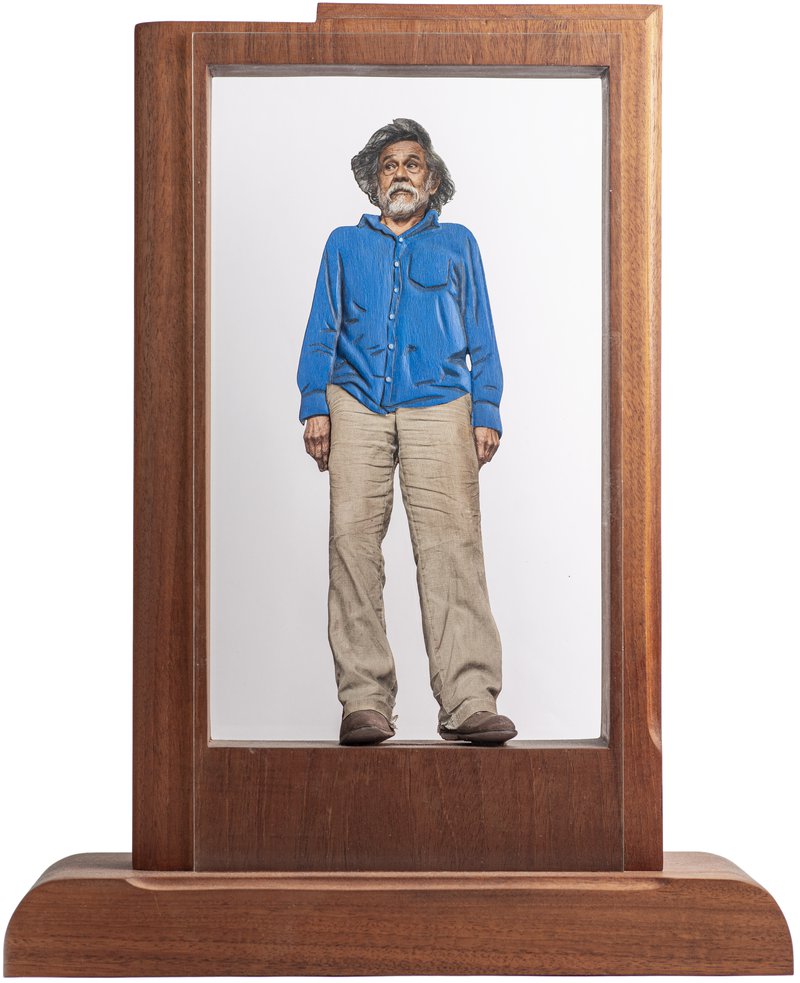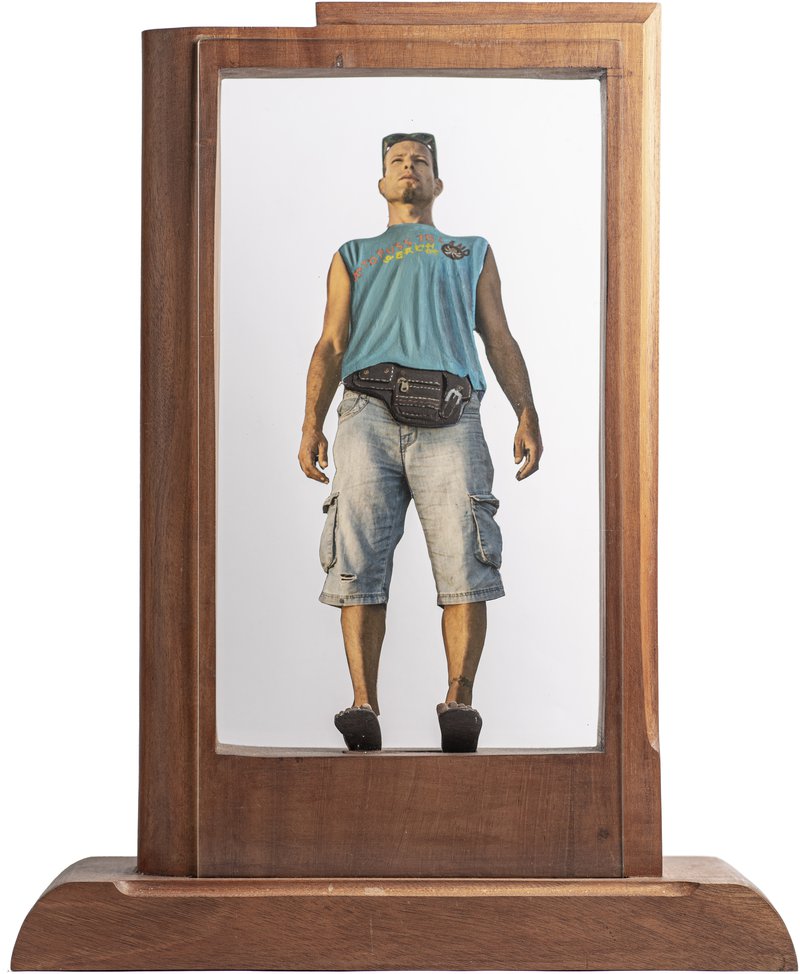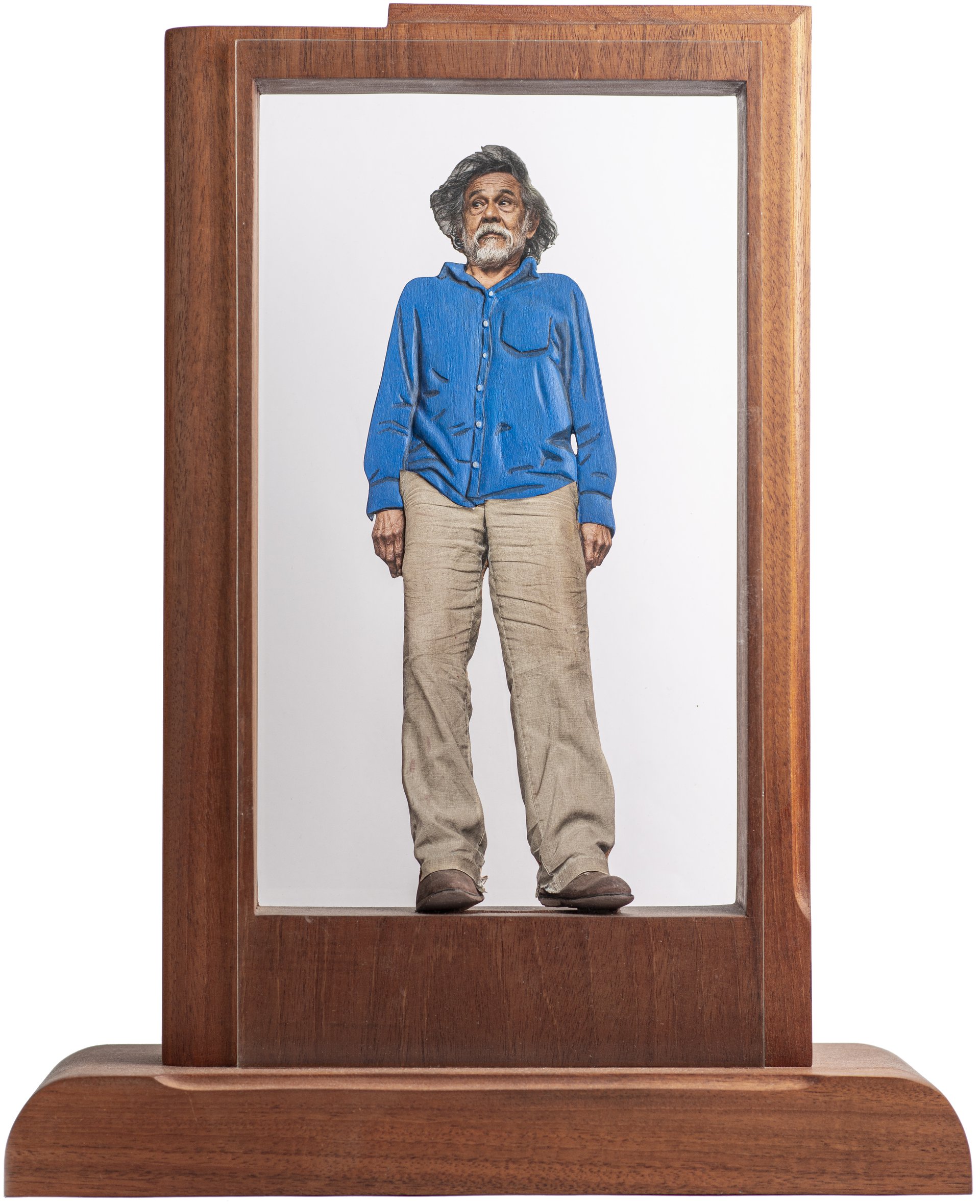
Men That Fall (2004, 2006, 2010, and 2016) is a visual and responsive work that spans over several years and media. It depicts a free-falling masculinity and the repelling forces of bodies, with all their integrity, frailty, presence, and stiffness. The project consists of videos, photos and sculptures of nine sets of men.
Revelación (2014) consists of nine sculptures that are based on still photos from the video suite of Men That Fall. The sculptures capture the men in a frozen moment in time, while they are falling. The practice of fotoesculturas has its beginning in the 1930s Mexico, where artisans began producing fotoesculturas: portraits that combine photography, sculpture and painting to produce three-dimensional likenesses. These photo-sculptures were inexpensive to produce and were often commissioned from traveling salesmen to commemorate important events (weddings, family celebrations), memorialize the dead, honor individuals, etc. Fotoesculturas were popular throughout Mexico and Mexican-American communities in the US. However, there is almost no documentation of these vernacular images, or objects, in the history of photography. In short, vernaculars are photography’s parergon, the part of its history that has been pushed to the margins (or beyond them to oblivion) precisely in order to delimit what is and is not proper to this history’s enterprise. The boundary between carved relief and a photographic surface is seamless. Conceptually, it reproduces a subtle play between two- and three-dimensional space, between movement and stasis, while reducing the sculptural viewing angle.
In Revelación, each man is framed in the same way – in a rectangle of unpainted wood, mounted on a platform – but other than that they appear quite different as individuals. They are of different ages, and are dressed quite differently, suggesting different class and cultural backgrounds. So what is it that ties them together, other than the fact that they are all men? The men are related through the extensive Family of Performing Pictures that started in 2004. The connection between seeing and touching is a long time credo of Performing Pictures’ work, which occupies the borderland between (still) photo and (moving) animation. This entanglement between touch and sight, makes photography so compelling as a medium, but also strangely paradoxical. Roland Barthes explains in Mythologies: “Touch is the most demystifying of all senses, unlike sight, which is the most magical.” Photographic objects overtly reflect on this same paradox.
